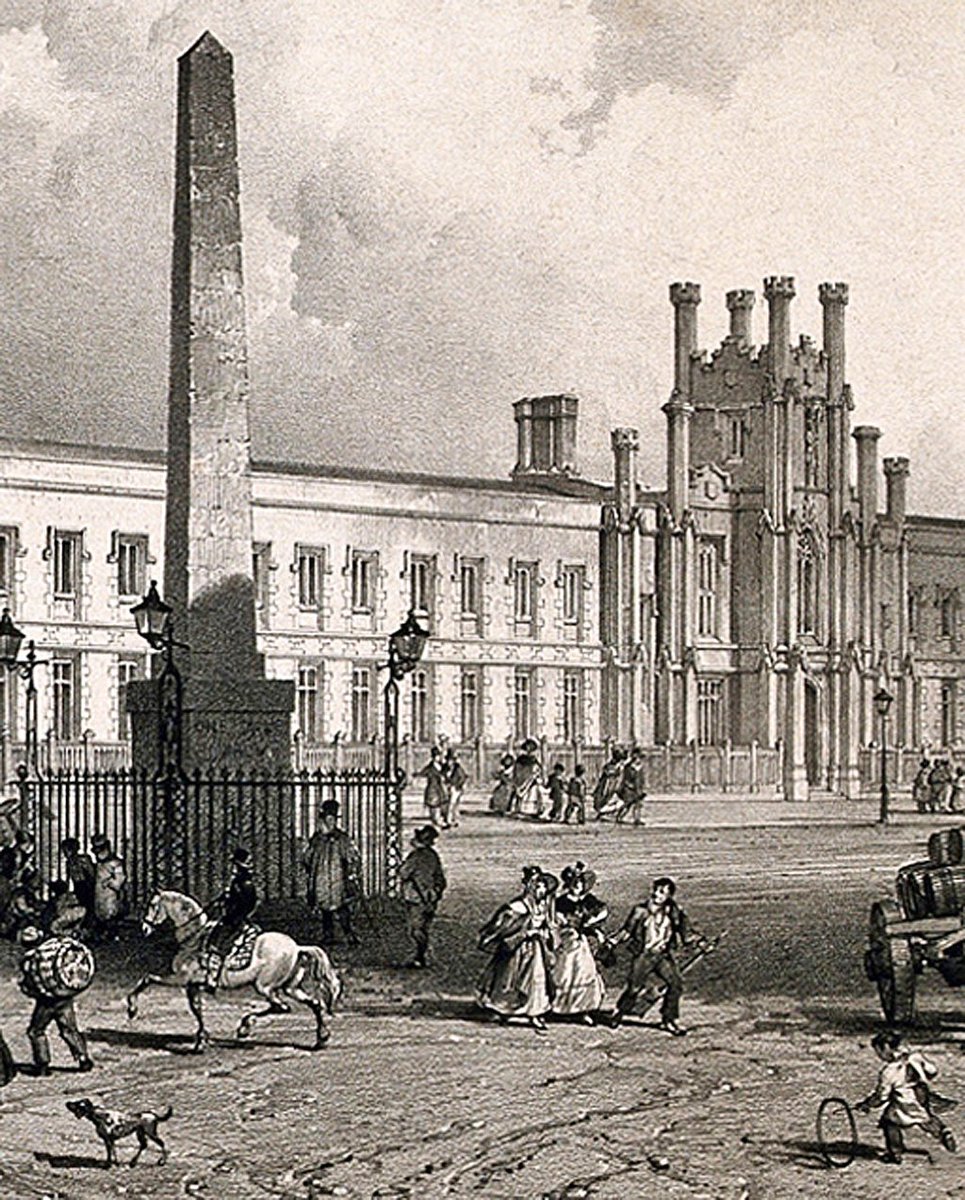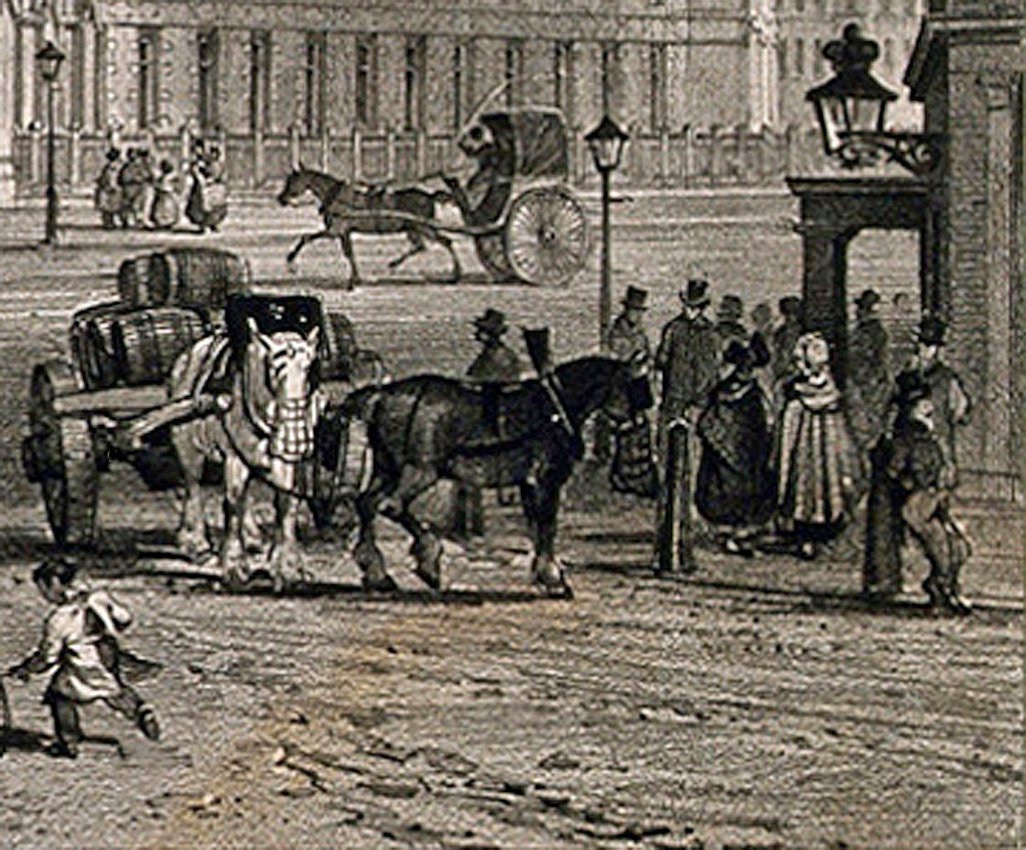The much moved and resited obelisk at St George& #39;s Circus, practically the only remnant of the ambitious plans outlined by #RobertMylne and further projected by #GeorgeDance the younger to drain the marshes and lay out a new town, following the building of Blackfriars Bridge
Here& #39;s the area, shown in Richard Horwood& #39;s v detailed map, which exists in many revised states c.1799-1819
The Obelisk is roughly in the centre of the awkward junction created by the meander of the Thames and the wish to build straight roads
The Obelisk is roughly in the centre of the awkward junction created by the meander of the Thames and the wish to build straight roads
Despite the best-laid plans of the ferociously bad-tempered Mylne and the more calm-natured Dance, the new district in the Borough of #Southwark did not become an area of genteel domesticity
If you look closely at the map you can see several institutions of charity, or reform
If you look closely at the map you can see several institutions of charity, or reform
The largest are the Magdalen Hospital and the New Bethlem Hospital
The Magdalen, as its name implies, was for penitent prostitutes, Magdalen College may have owned the land
The building was credited to Joel Johnson, a carpenter-builder, Master of the Carpenter& #39;s Company in 1789
The Magdalen, as its name implies, was for penitent prostitutes, Magdalen College may have owned the land
The building was credited to Joel Johnson, a carpenter-builder, Master of the Carpenter& #39;s Company in 1789
The New Bethlem Hospital was intended as a replacement for the ancient asylum in the City, just north of #LondonWall
As the old building was hemmed in by the city, a competition was held for the design of a new hospital in rural Southwark; this turned into a complete shambles
As the old building was hemmed in by the city, a competition was held for the design of a new hospital in rural Southwark; this turned into a complete shambles
when the designs which won the First, Second, and Third premiums were all set aside, and the existing Surveyor to the Hospital, James Lewis, was instructed to cobble together a design incorporating the best bits from the three winners!
The remains of his work now house the @I_W_M
The remains of his work now house the @I_W_M
Some of you may have seen the repeat of Ian Hislop& #39;s prog about the English stiff upper lip the other night
He mentioned the wave of patriotic fervour that followed the death of Nelson at the moment of victory
Horwood shows this with an area marked "Nelson Square so to be called"
He mentioned the wave of patriotic fervour that followed the death of Nelson at the moment of victory
Horwood shows this with an area marked "Nelson Square so to be called"
Nelson Square was built in due course, attributed to Samuel Pepys Cockerell [1753-1827] by @SurveyofLondon
His name refers to his matrilineal descent from the family of @samuelpepys
Horwood& #39;s map is confusing as Bedlam is shown but the square isn& #39;t, despite it being built first?
His name refers to his matrilineal descent from the family of @samuelpepys
Horwood& #39;s map is confusing as Bedlam is shown but the square isn& #39;t, despite it being built first?
A further observation on Horwood& #39;s map: I love the way he draws people& #39;s gardens, as if everyone had a mini #Rococo landskip at the back of the house
Reverting to St George& #39;s Circus, as I mentioned various institutions came to Southwark, seeking escape from overcrowded London
One institution that took its place on the circus was The School for the Indigent Blind, the subject of a number of prints
One institution that took its place on the circus was The School for the Indigent Blind, the subject of a number of prints
The first, dated 1813, shows a lively scene at the traffic island: a crowded Stagecoach - perhaps a Diligence? - enters from the right, with a lady riding shotgun; while from the Borough Road direction a wealthy, fashionably-dressed young Jehu drives his gig - or is it a phaeton?
The modestly talented architect who designed the School in dull neo-classical style, with Ionic pilasters on the piano nobile, was George Tappen
The second print made in 1829 after a drawing by the prolific Thomas Hosmer Shepherd, gives us a slightly different point of view
The second print made in 1829 after a drawing by the prolific Thomas Hosmer Shepherd, gives us a slightly different point of view
Shepherd shows the shop which sold goods made by the blind children to help defer the costs of running the school; the only item I can see clearly is hearth rugs, then possibly macassars?
The School was a great success and fairly soon needed to expand, so the governors acquired
The School was a great success and fairly soon needed to expand, so the governors acquired
more land, and engaged the services of John Newman [1786-1859] to create a larger school
Newman worked on it from 1834-38, incorporating the first building, refacing it to suit the starved #TudorGothic style briefly fashionable immediately before the accession of Victoria
Newman worked on it from 1834-38, incorporating the first building, refacing it to suit the starved #TudorGothic style briefly fashionable immediately before the accession of Victoria
to the Throne
This lithograph was prepared by Louis Haghe after a sketch by the architect; the lettering indicates that Newman was a Fellow of the @SocAntiquaries and brings out the big guns in the form of Archbish Cantuar, the Most Rev and Right Hon William Howley
This lithograph was prepared by Louis Haghe after a sketch by the architect; the lettering indicates that Newman was a Fellow of the @SocAntiquaries and brings out the big guns in the form of Archbish Cantuar, the Most Rev and Right Hon William Howley
As in the coloured engraving of the earlier school building, there& #39;s a great deal of activity in the staffage: two Shillibeer horse omnibuses, one intriguingly called & #39;Napoleon& #39;, the other disgorging passengers, and a heavily-laden stagecoach heading down the road to Bedlam
Note the sandwich board man in striped trousers, whose sign reads & #39;CIVIT CAT [something something]& #39;, and the shorter skirts of fashionable ladies, to avoid dragging their hems in the thick horse manure that coated all roads with sticky stinking black filth
The lighting around the obelisk has been much improved with four - presumably gas? - lamps attached to the railings; notice the crossing-sweeper with his long broom escorting the ladies through the shit, for a small tip, and the child, dressed in a sensible smock, operating his
hoop through all the crap
In the background you can see the paper-thin castellated towerlets of Newman’s entrance, looking a little like the horribly cement-rendered exterior of the roughly contemporary Knebworth House?
In the background you can see the paper-thin castellated towerlets of Newman’s entrance, looking a little like the horribly cement-rendered exterior of the roughly contemporary Knebworth House?
Another single-seater gig in the background, with the driver whipping-up his horse to greater speed
In the foreground a brewer& #39;s dray delivering barrels of beer to the pub on the corner, note the heavy horses with their nosebags, the darker one doing that funny tipping thing with
In the foreground a brewer& #39;s dray delivering barrels of beer to the pub on the corner, note the heavy horses with their nosebags, the darker one doing that funny tipping thing with
with his hoof that horses do when at rest, and the v broad wheels of the cart, to carry the immense load of all the heavy barrels

 Read on Twitter
Read on Twitter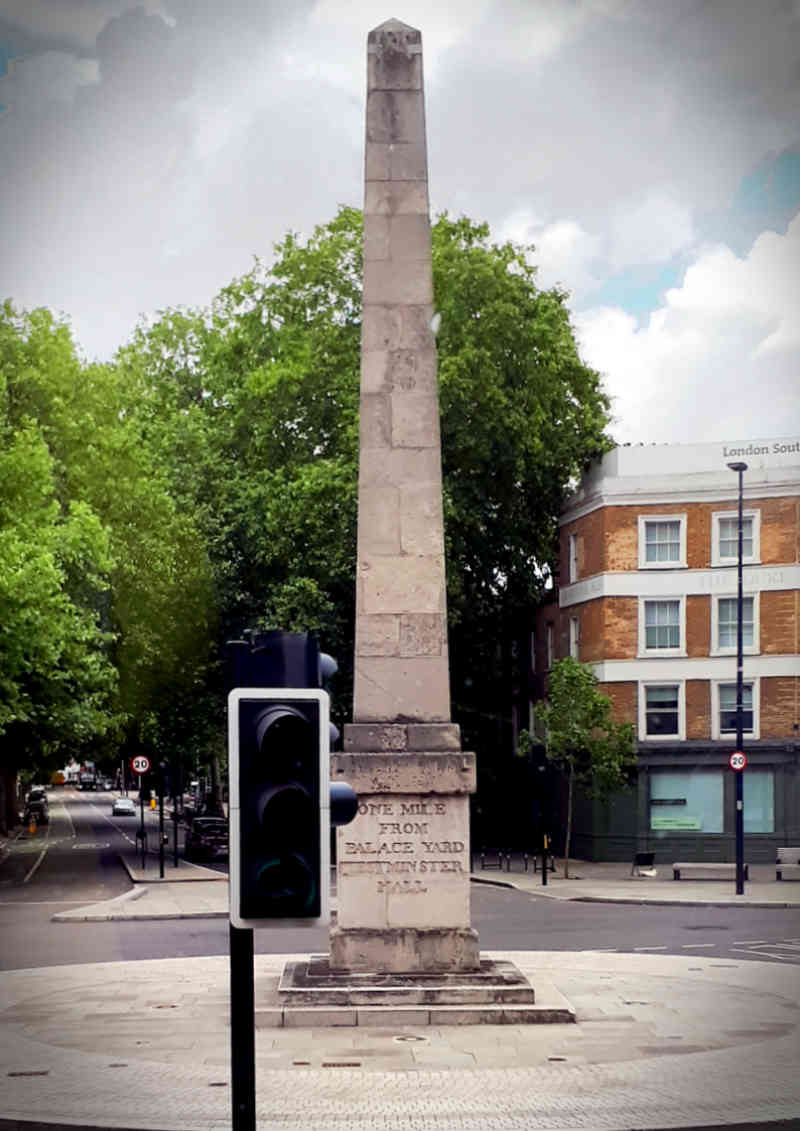
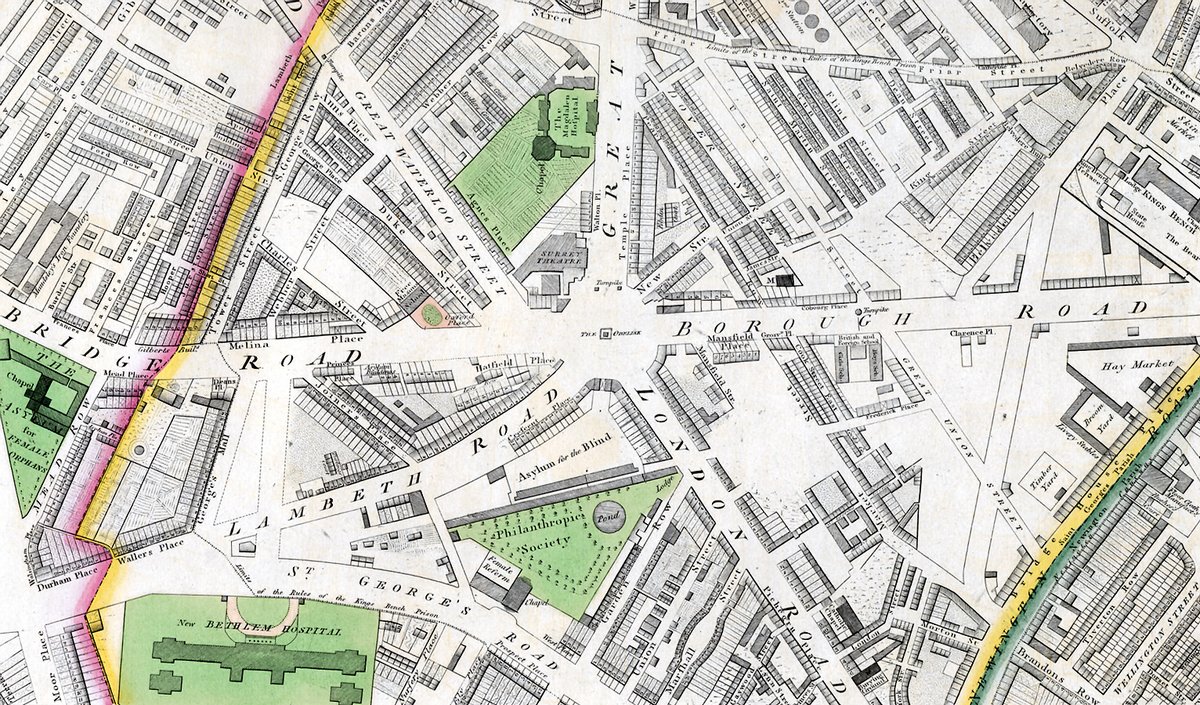
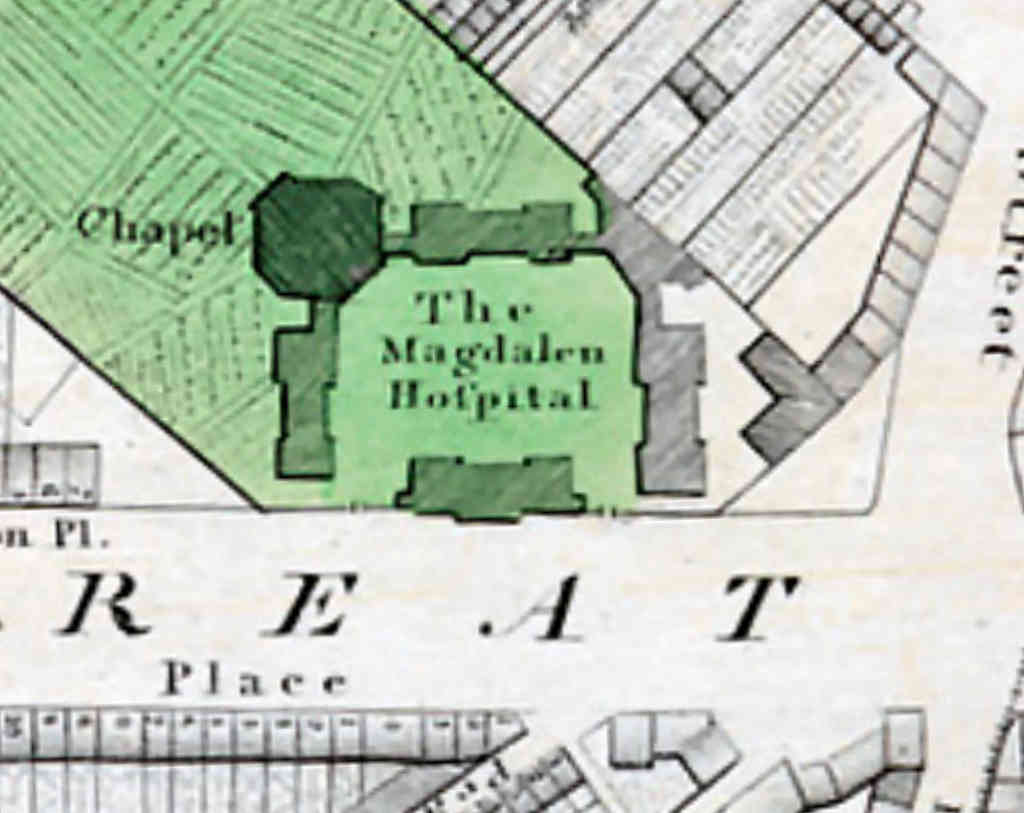
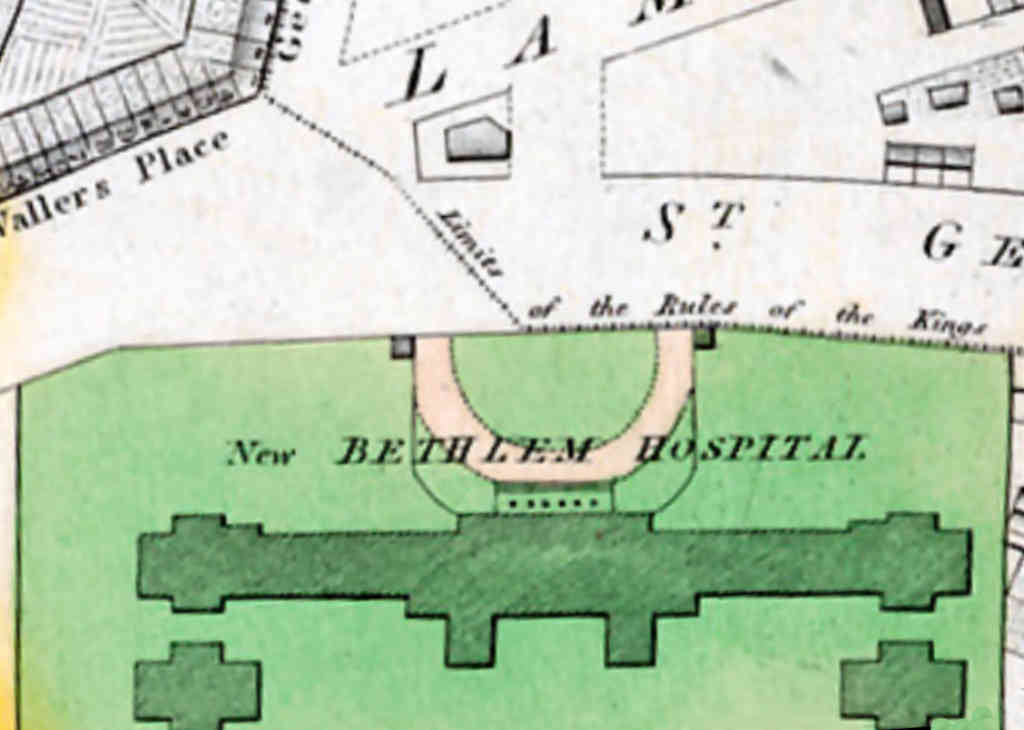
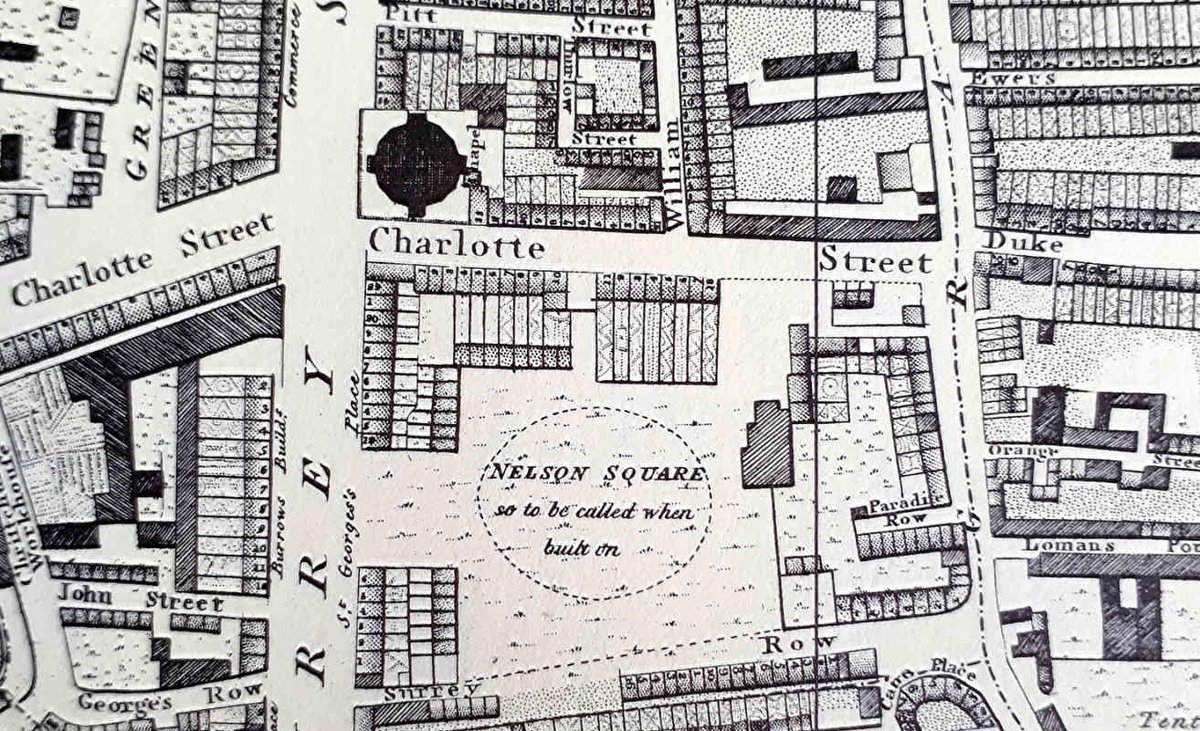
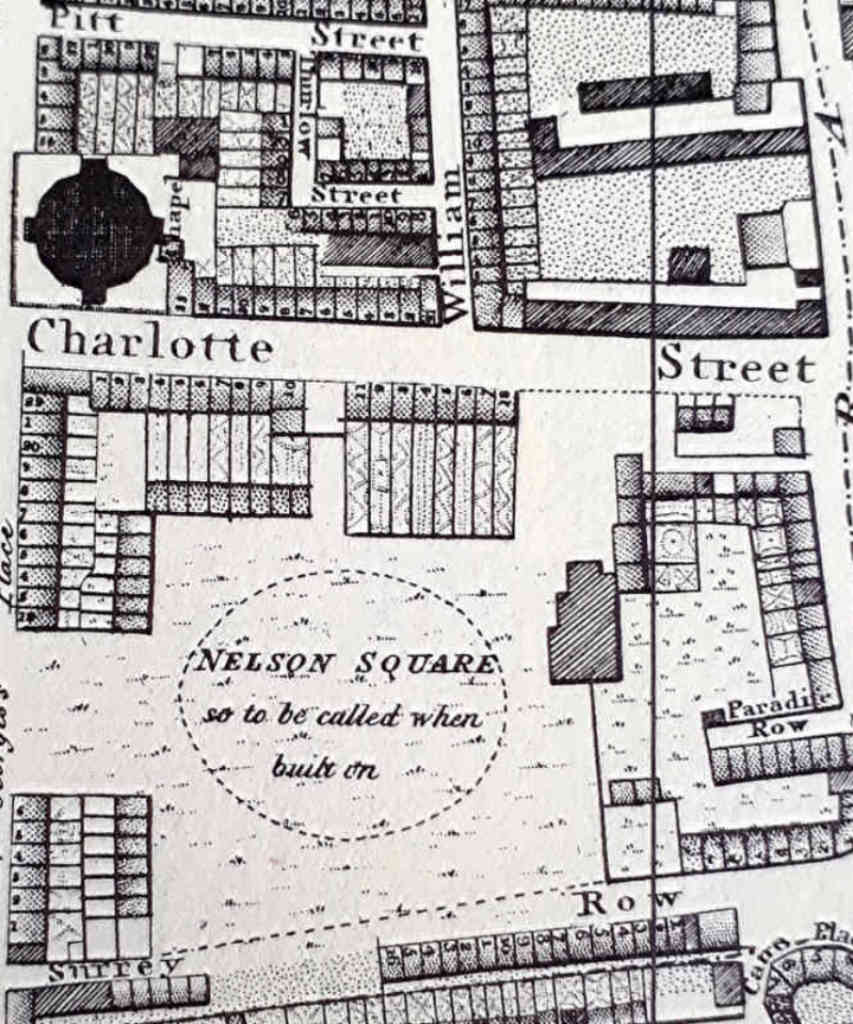
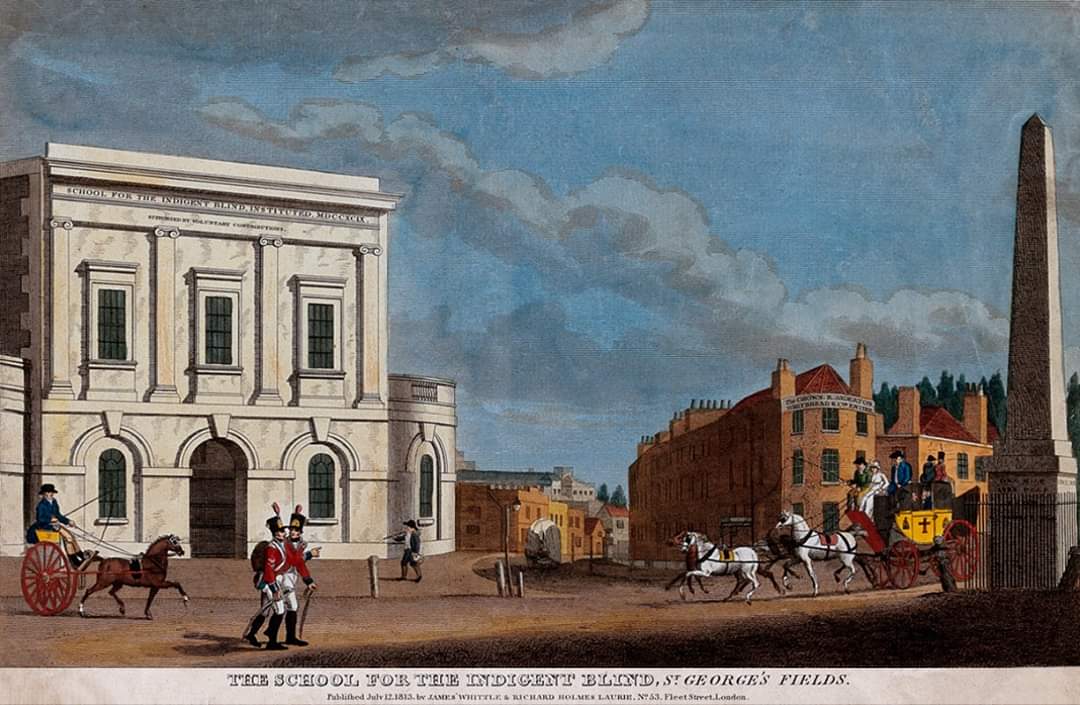
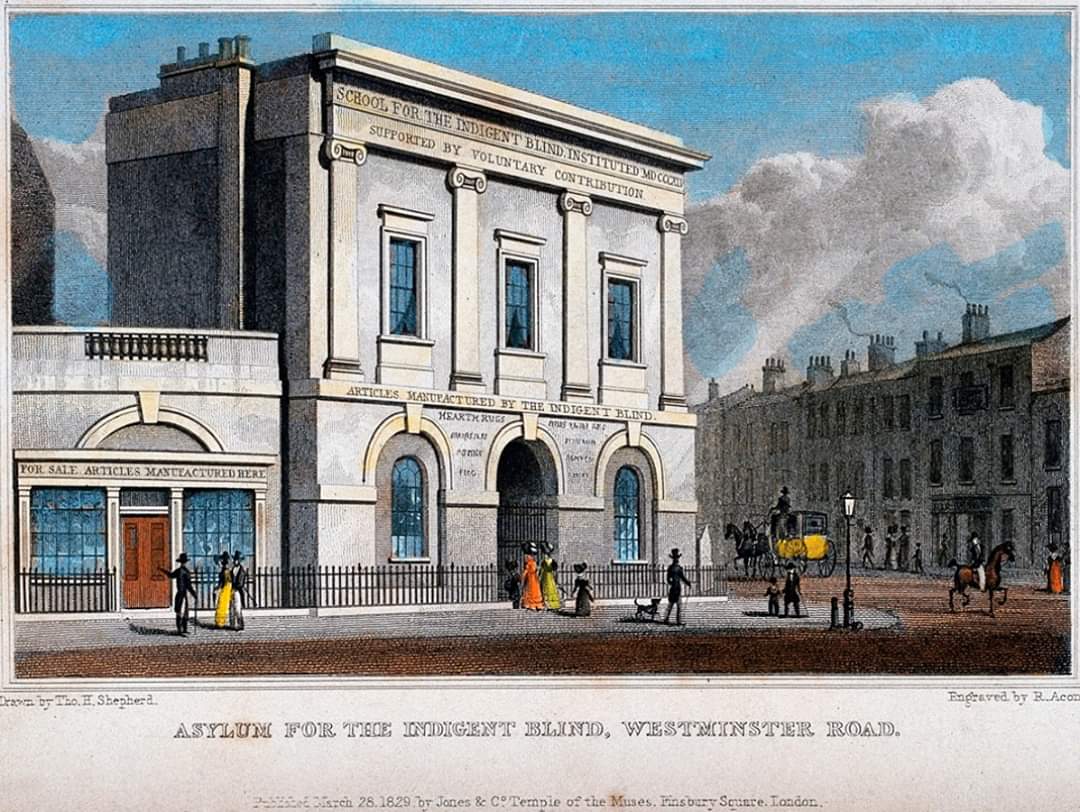
![more land, and engaged the services of John Newman [1786-1859] to create a larger schoolNewman worked on it from 1834-38, incorporating the first building, refacing it to suit the starved #TudorGothic style briefly fashionable immediately before the accession of Victoria more land, and engaged the services of John Newman [1786-1859] to create a larger schoolNewman worked on it from 1834-38, incorporating the first building, refacing it to suit the starved #TudorGothic style briefly fashionable immediately before the accession of Victoria](https://pbs.twimg.com/media/Ed3oTArWsAMoj7b.jpg)

